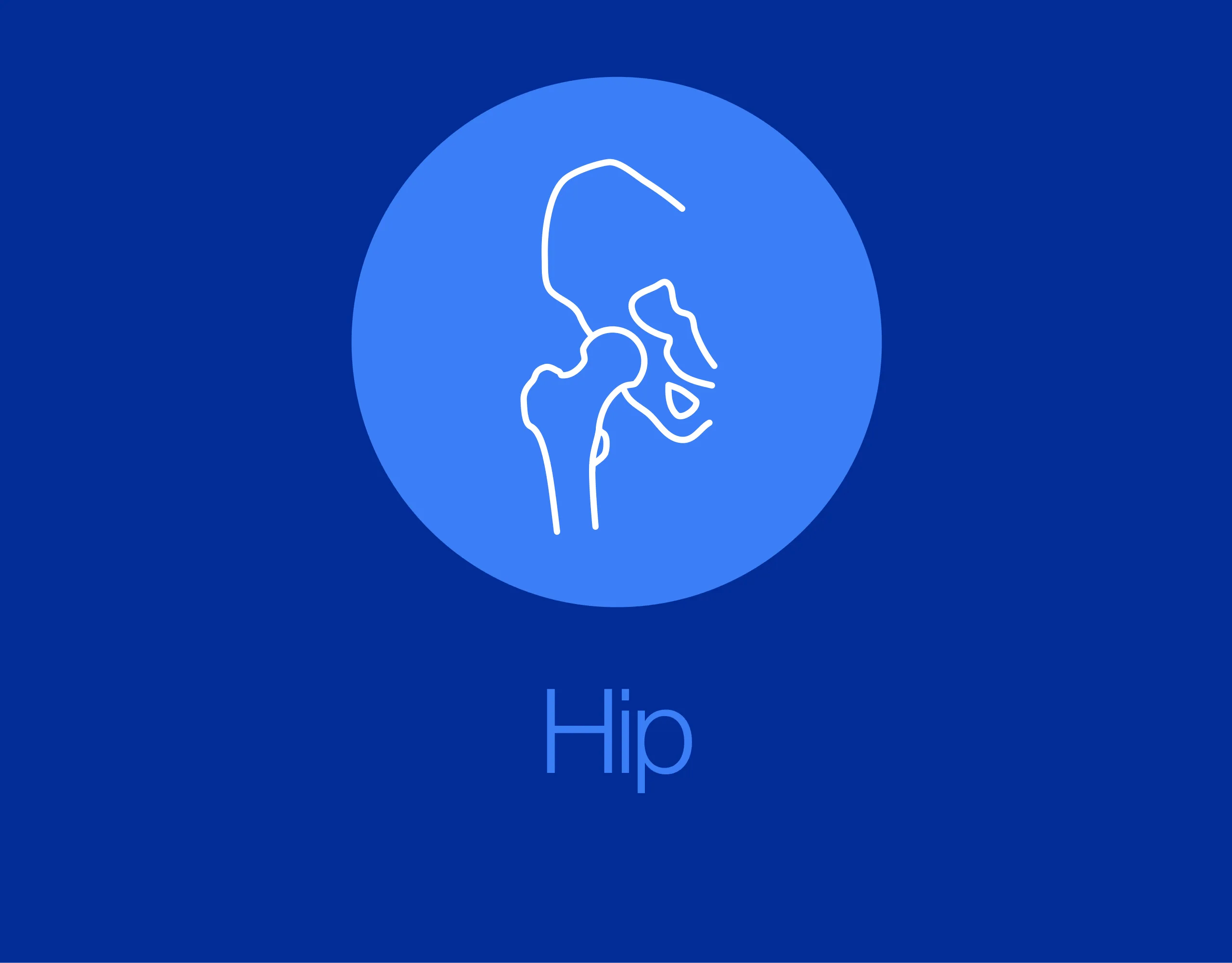ORIF - Plates without angular stability
1. Principles
Absolute stability
In case of a simple fracture pattern absolute stability is mandatory. You can achieve this with lag screw technique. Depending on the fracture pattern the lag screw could be through the plate (illustrated here) or outside the plate.
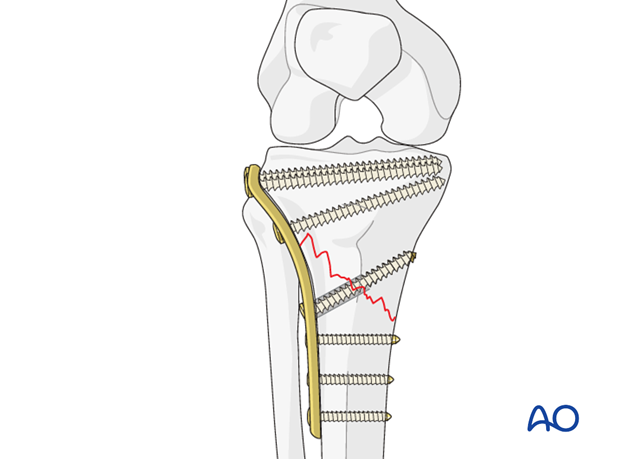
For such fracture pattern where the lag screw is outside the plate, the lag screw is applied first then a plate is used as a neutralization plate.
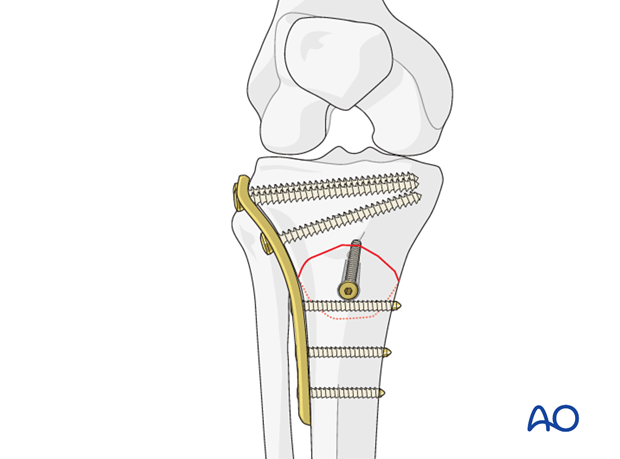
Compartment syndrome
Monitor the neurovascular status of the limb carefully not to miss a compartment syndrome.
2. Patient preparation and approach
Patient preparation
This procedure is normally performed with the patient in a supine position.
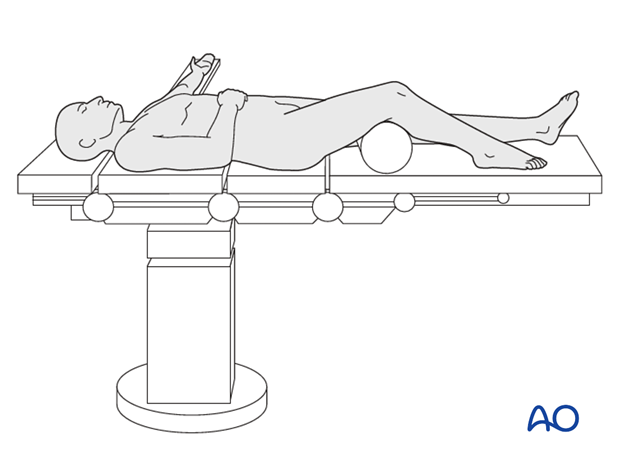
Approach
For this procedure an anterolateral approach is used.
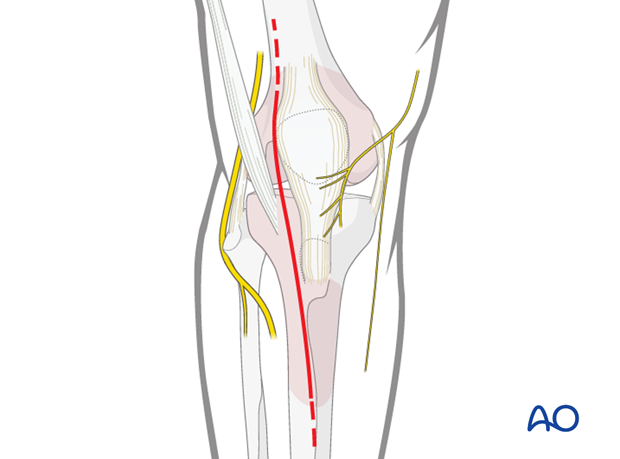
3. Reduction
Clamps
Indirect reduction may be achieved by external manipulation of the fractured fragment using clamps. In cases where adequate closed reduction is not achieved, open anatomical reduction is required.
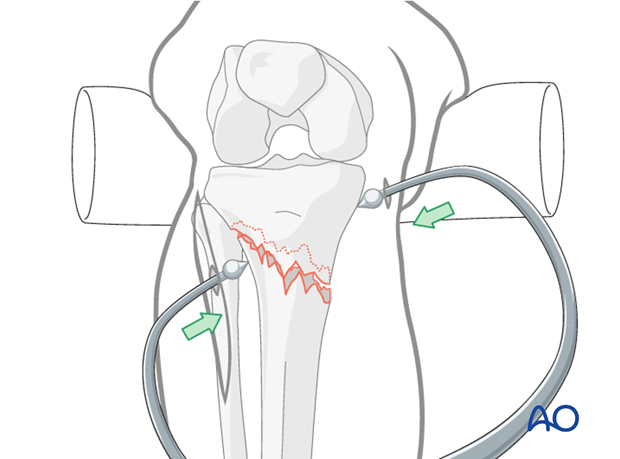
Pearl: clamp on plate
If you intend to keep the clamp on throughout the whole procedure it is best to slip the plate under the clamp prior to tightening the clamp to maintain reduction. Under these circumstances you determine which screw hole is best for the placement of the tip of the clamp from the pre-operative plan and intra-operative trial.
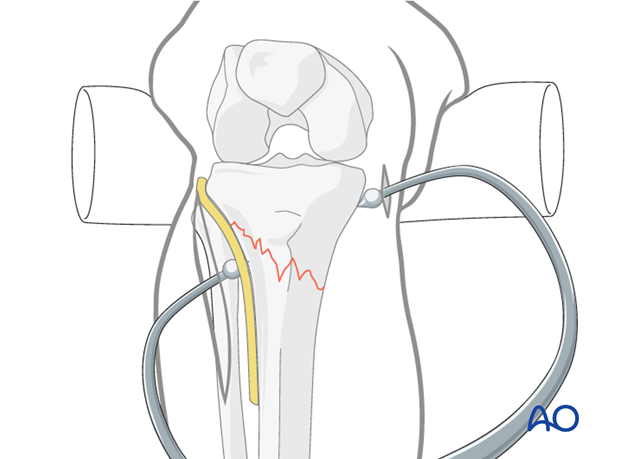
4. Fixation
Lag screw through the plate
First, the lag screw is applied through the plate using the conventional lag screw technique.
Click here for a detailed description of the lag screw technique.
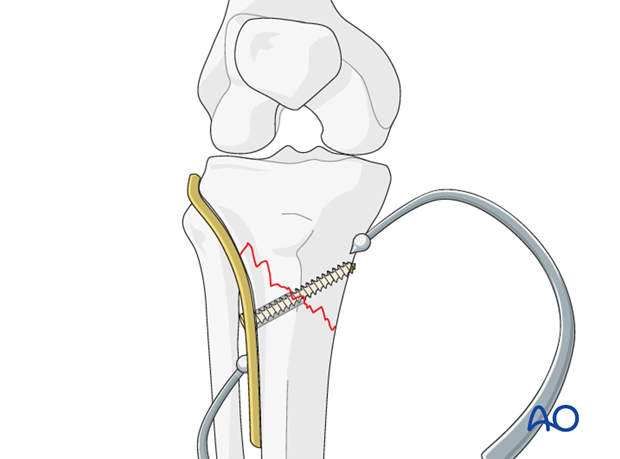
Additional screw insertion
If possible three bicortical screws on each side of the fracture should be applied. No particular order of insertion has to be followed.

Alternative: lag screw outside the plate
Illustration showing the lateral projection of the use of a lag screw outside the plate.
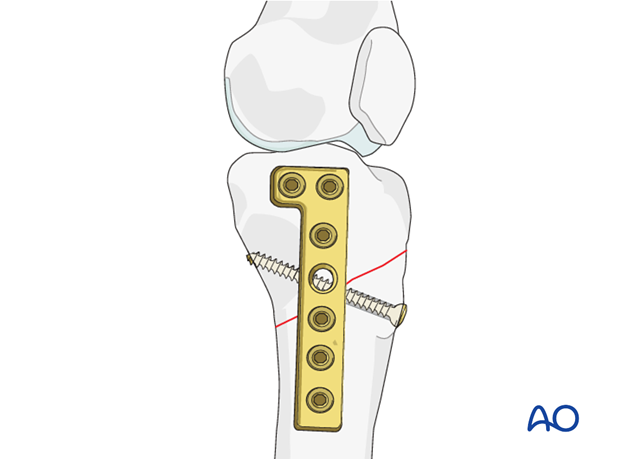
5. Aftercare
Compartment syndrome and nerve injury
Close monitoring of the tibial compartments should be carried out especially during the first 48 hours to rule out compartment syndrome.
The neurovascular status of the extremity must be carefully monitored. Impaired blood supply or developing neurological loss must be investigated as an emergency and dealt with expediently.
Functional treatment
Unless there are other injuries or complications, mobilization may be performed on post OP day 1. Static quadriceps exercises with passive range of motion of the knee should be encouraged. Afterwards special emphasis should be given to active knee and ankle movement.
The goal of early active and passive range of motion is to achieve a full range of motion within the first 4 – 6 weeks. Maximum stability is achieved at the time of surgery. A delay beyond a few days to allow swelling to subside is illogical and harmful.
Weight bearing
Partial weight-bearing (touch down or of 10 to 15 kilograms) may be performed with crutches or a walker.
Follow up
Wound healing should be assessed on a short term basis within the first two weeks. Subsequently a 6 and 12 week follow-up is usually performed. If delayed healing occurs additional bone grafting may be required.
Implant removal
Implant removal is not mandatory and should be discussed with the patient.
